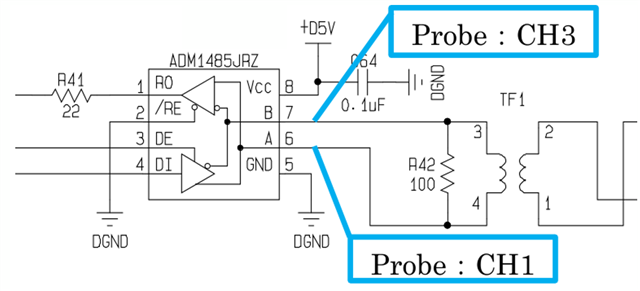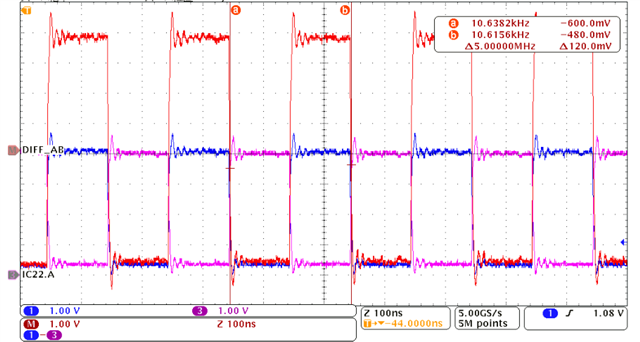Tool/software:
We are currently evaluating THVD1450DR as a replacement for the ADM1485JRZ and have observed waveform behavior during transmission testing.
When using THVD1450DR, we noticed significant overshoot and undershoot on the A/B differential outputs, which raises concerns regarding signal integrity.


Based on our initial analysis, we suspect the following potential causes:
-
The strong driver strength of THVD1450DR may be causing signal reflections due to mismatched termination or transformer characteristics.
-
The transformer (TF1) may be contributing to the issue due to its leakage inductance or limited frequency response.
-
The existing 100Ω termination might not match the differential impedance, or single-sided termination could be insufficient.
-
PCB layout mismatches such as improper differential pair routing or poor return paths may be worsening the effect.
-
The measurement method (standard probe setup) might also exaggerate ringing due to probe inductance.
We would greatly appreciate your feedback on these observations and any additional considerations you may recommend.
Thanks,
Conor

